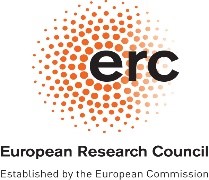Received:
2023-01-06 | Accepted:
2023-03-08 | Published:
2023-03-30
Title
Agglomeration benefits and costs of investing in urban transport infrastructure
Abstract
Theory and evidence suggest that a city owes its existence to an agglomeration benefit. An investment in urban transportation infrastructure may increase this benefit. While some years ago the agglomeration benefit of urban transportation was just a vague idea, recently its size has been estimated and the idea has gained concreteness and respectability. However, the theoretical literature has emphasized the agglomeration benefit that arises through immigration and higher population, while the empirical literature has emphasized the benefit that arises from effective density at constant population. A third strand of the literature has discussed transportation of goods. We bring together these theoretical and empirical literatures, and discuss which agglomeration benefits and costs are relevant for major categories of urban passenger and freight transport investment.
Keywords
transport, agglomeration, effective density, cost-benefit analysis
JEL classifications
R13
, R42
, H43
, H54
URI
http://jssidoi.org/ird/article/125
DOI
Pages
59-71
Funding
The research is supported by the Norwegian Research Council Grant no 267 697, 'Impact'.
This is an open access issue and all published articles are licensed under a
Creative Commons Attribution 4.0 International License
References
Abdel-Rahman, H.M., & M. Fujita, 1990. Product variety, Marshallian externalities, and city sizes. Journal of Regional Science, 30, 2, 165-183. https://doi.org/10.1111/j.1467-9787.1990.tb00091.x
Search via ReFindit
Alfeldt, G.M. and E. Pietrostefani, 2019. The economic effects of density: A synthesis. Journal of Urban Economics, 111, 93-107. https://doi.org/10.1016/j.jue.2019.04.006
Search via ReFindit
Behrens, K, G. Duranton, & F. Robert-Nicoud, 2014. Productive cities: Sorting, selection and agglomeration. Journal of Political Economy, 122, 3, 507-553. https://doi.org/10.1086/675534
Search via ReFindit
Davis, D.R, & J.I. Dingel, 2019. A spatial knowledge economy. American Economic Review, 109, 1, 153-170. https://doi.org/10.1257/aer.20130249
Search via ReFindit
Donaldson, D., & R. Hornbeck, 2016. Railroads and American economic growth: A “market access†approach. The Quarterly Journal of Economics, 790-858. https://doi.org/10.1093/qje/qjw002
Search via ReFindit
Duranton, G., & D. Puga, 2004. Micro-foundations of urban agglomeration economies. In Henderson, J.V and J-F Thisse (eds). Handbook of Regional and Urban Economics, 4, 2063-2117, North Holland. 80005-1 https://doi.org/10.1016/S1574-0080(04)
Search via ReFindit
Duranton, G., & D. Puga, 2014. The growth of cities. In Aghion, P. and S. Durlauf (eds). Handbook of Economic Growth, vol 2B, 781-853, North Holland. DOI: https://doi.org/10.1016/B978-0-444-53540-5.00005-7
Search via ReFindit
Fuijita, M., & P. Krugman, 1995. Intermediate goods and the spatial structure of an economy. Regional Science and Urban Economics, 18, 87-124. DOI. 00066-1 https://doi.org/10.1016/S0166-0462(00)
Search via ReFindit
Fujita, M., & T. Mori, 2005. Transport development and the evolution of economic geography. Portuguese Journal of Economics, 4, 129-156. DOI: https://doi.org/10.1007/s10258-005-0042-6
Search via ReFindit
Graham, D.J, S. Gibbons, & R. Martin, 2010b. The spatial decay of agglomeration economies: Estimates for use in transport appraisal. Final report. Mimeo, Imperial College, London. http://eprints.lse.ac.uk/id/eprint/44666
Search via ReFindit
Graham, D.J., 2007. Agglomeration, productivity and transport investment. Journal of Transport Economics and Policy, 41, 317-343. URL: https://www.ingentaconnect.com/content/lse/jtep/2007/00000041/00000003/art00003
Search via ReFindit
Graham, D.J., P.S. Melo, P. Jiwattanakulpaisarn & R.B. Noland, 2010a. Testing for causality between productivity and agglomeration economies. Journal of Regional Science, 50, 5, 935-951. https://doi.org/10.1111/j.1467-9787.2010.00676.x
Search via ReFindit
Harris, C.D., 1954. The market as a factor in the localization of industry in the U.S. Annals of the Association of American Geographers, 44, 315-348. https://doi.org/10.1080/00045605409352140
Search via ReFindit
Helpman, E. 1998. The size of regions. In Pines, D, E. Sadka and I. Zilcha (eds). Topics in Public Economics: Theoretical and Applied Analysis, 33-54. Cambridge University Press. https://www.amazon.com/Topics-Public-Economics-Theoretical-Analysis/dp/0521561361
Search via ReFindit
Kanemoto, Y. 2013. Second-best cost-benefit analysis in monopolistic competition models of urban agglomeration. Journal of Urban Economics, 76, 83-92. https://doi.org/10.1016/j.jue.2013.03.006
Search via ReFindit
Krugman, P., 1991. Increasing returns and economic geography. Journal of Political Economy, 99, 483-499. https://doi.org/10.1086/261763
Search via ReFindit
Krugman, P., 1993. First nature, second nature, and metropolitan location. Journal of Regional Science, 33, 2, 129-144. https://doi.org/10.1111/j.1467-9787.1993.tb00217.x
Search via ReFindit
Laird, J.J., & A.J. Venables, 2017. Transport investment and economic performance: A framework for project appraisal. Transport Policy, 56, 1-11. https://doi.org/10.1016/j.tranpol.2017.02.006
Search via ReFindit
Lucas, R.E., 1988. On the mechanics of economic development. Journal of Monetary Economics, 22, 3-42. 90168-7 https://doi.org/10.1016/0304-3932(88)
Search via ReFindit
Marshall, A., 1890. Principles of Economics. Macmillan. https://www.amazon.com/Principles-Economics-Mankiws/dp/0538453052
Search via ReFindit
Redding, S.J. & A.J. Venables, 2004. Economic geography and international inequality. Journal of International Economics, 62, 51-82. https://doi.org/10.1016/j.jinteco.2003.07.001
Search via ReFindit
Redding, S.J., & E. Rossi-Hansberg, 2017. Quantitative spatial economics. Annual Review of Economics, 9, 21-58. https://doi.org/10.1146/annurev-economics-063016-103713
Search via ReFindit
Redding, S.J., & M.A. Turner, 2015. Transportation costs and the spatial organization of economic activity. In Duranton, G., V. Henderson and W. Strange (eds). Handbook of Regional and Urban Economics, vol 5B, 1339-1397. North Holland. https://doi.org/10.1016/B978-0-444-59531-7.00020-X
Search via ReFindit
Romer, P., 1990. Endogenous technological change. Journal of Political Economy, 98, 5, S71-S102. https://doi.org/10.1086/261725
Search via ReFindit
Topa, G., & Y. Zenou, 2015. Neighborhood and network effects. In Duranton, G, V. Henderson and W. Strange (eds). Handbook of Regional and Urban Economics, vol 5A, 561-623, North Holland. https://doi.org/10.1016/B978-0-444-59517-1.00009-X
Search via ReFindit
Venables, A.J., 2007. Evaluating urban transport improvements. Journal of Transport Economics and Policy, 41, 2, 173-188. URL: https://www.ingentaconnect.com/content/lse/jtep/2007/00000041/00000002/art00002
Search via ReFindit












 RSS 1.0
RSS 1.0